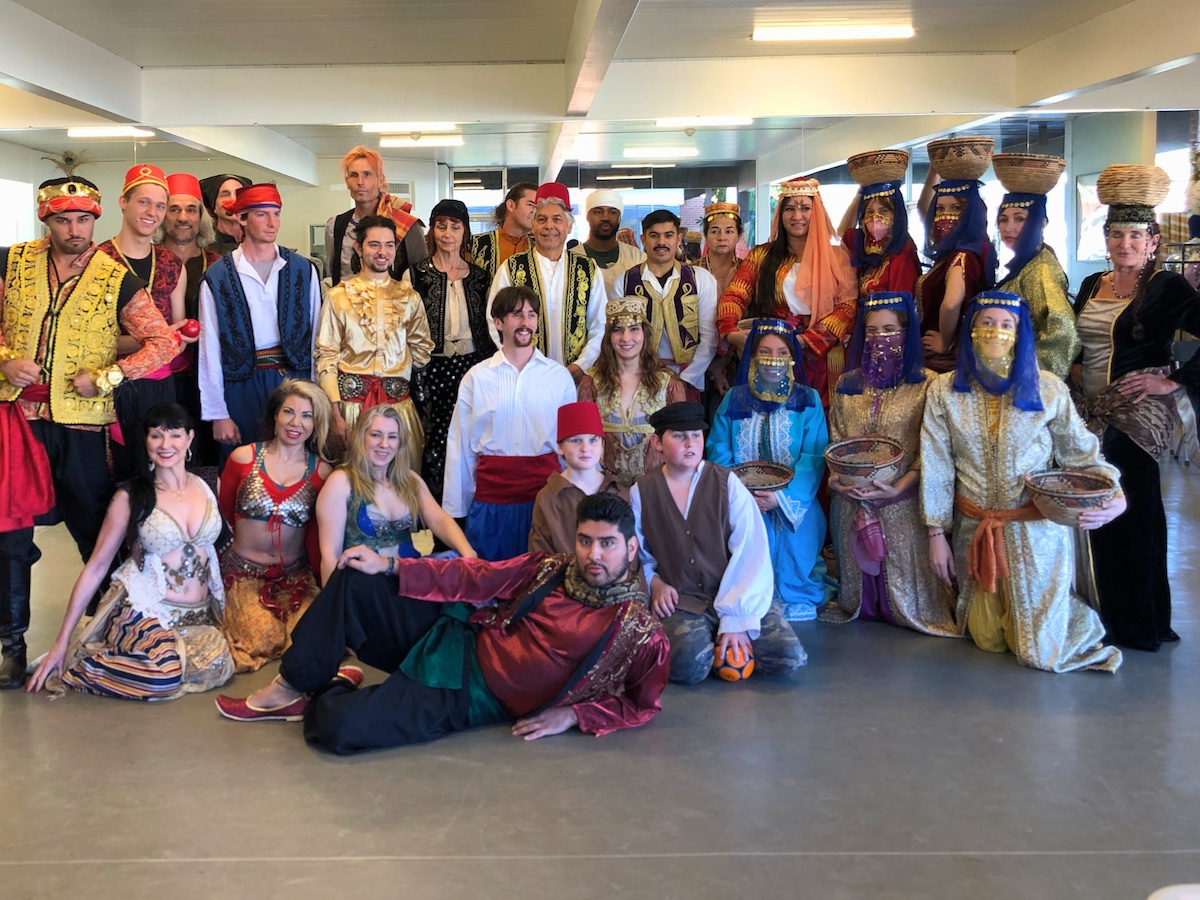‘Seraglio’ Delivers Dance, Cobras, and Star-Crossed Lovers

When Alexandra King created and produced Seraglio, her original three-act Middle Eastern folkloric ballet about star-crossed lovers in early 20th century Istanbul, she thought it had run its course after performances in Santa Barbara, Los Angeles, Ojai, and Salt Lake City in 1989-1990.
“I never planned to do anything with it again,” King said. And indeed, her career as performer, choreographer, producer, and teacher was booming, what with her Middle Eastern dance school about to hit the decade mark, and her role as co-founder of the UCSB Middle East Ensemble with Dr. Scott Marcus in 1990 also required attention.
But a few years ago, a friend asked her one of those perspective-inducing questions: “What do you still want to do before you croak?”
The bucket list query begat a scream of consciousness, King recalled, and what appeared was the desire to re-mount Seraglio from the vantage point of three additional decades of experience and knowledge.
“I realized I wanted to revive the ballet and make it much richer and longer and more exciting,” King said. “And bring it to the Arlington, which is the only theater in Santa Barbara where I hadn’t ever performed.”
King said the original impetus for Seraglio came from seeing Carlos Saura’s film Carmen, which adapted the Bizet opera using Flamenco. I can do that, she figured.
“I always wanted to be a storyteller because I came from a family of actors, dancers, and musicians, including stars of Broadway and the silent screen,” she recalled. “I became obsessed with making a ballet with a real story. So I decided to put a twist on Romeo and Juliet because the conflict between Turkey and Greece had a juicy background. What if I had a Turkish girl fall in love with a Greek guy? I can choreograph it with Greek and Turkish dance and there’d be lots of fight scenes.”
While King made her mark and money primarily with belly dance, her vision was to use folk dance, her first love, to tell the story.
“We didn’t need tutus and toe shoes,” she said. “Just boots and bare feet.”
Thirty-five years later, Seraglio returns with much more elaborate stage sets, lighting, costumes and choreography, all to elevate the enchanting evening of cultural immersion in the cultures and dances.
“There are probably a dozen new characters and 10 new dances, and we’ve expanded the dramatic sequences so that there’s as much drama in every act as there is dance,” King explained. “I added a couple of concluding sequences to give the story a more satisfying wrap.”
Among the additions are more dance sequences in the opening, including a cobra dance within a circus scenario to portray “all these wild characters that existed there back then,” she said. “Turkey and Istanbul were a really multicultural society, full of indigenous folks that were gypsies but much in demand artists. We have street dancers, horses, jugglers, showing what you would have seen in the streets back then.”
Amping up the cultural accuracy of the gripping tale of love set against a dying Ottoman empire was another impetus for remounting Seraglio.
“Back then, I knew a lot about Greek and Persian dancing, but not about Turkish,” King explained. “I also didn’t know about the history and geography. But after I started working at UCSB I really wanted to update the facts and make everything more authentic.”
The cast for the new version is more than 40 strong, made up mostly of professional dancers from Santa Barbara and beyond, including some King has been privately tutoring for the last six months and all of whom will convey the star-crossed story only through dance and movement but no dialog. There’s only a single performance on Saturday, March 2, partly because King has other duties to attend to – including a performance by UCSB Middle East Ensemble on campus a week later.
“Expanding and producing Seraglio again and turning it into a legacy work is like a dream come true,” she said.
Call (805) 963-9589 or visit www.arlingtontheatresb.com/upcoming-events.






